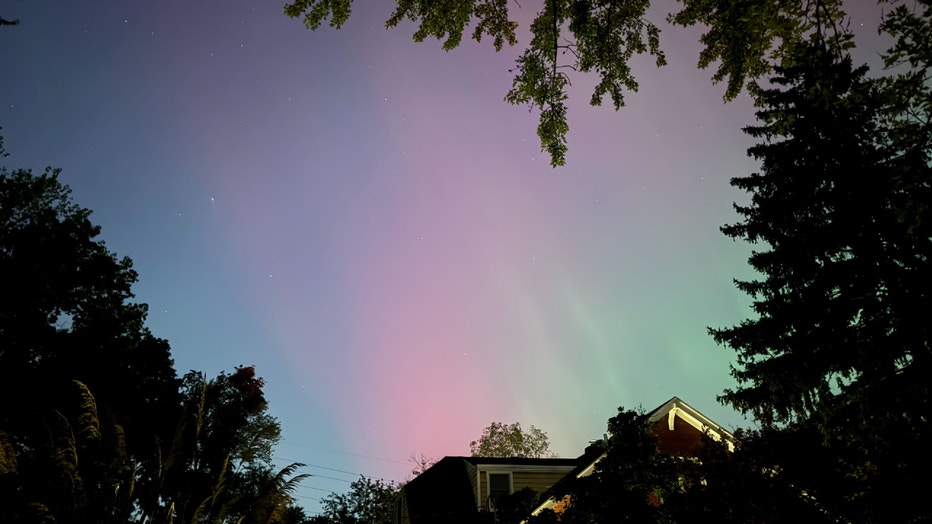Michigan Northern Lights: Why the aurora has been visible so much lately
The Northern Lights in Metro Detroit on Oct. 10, 2024 (Photo: Coulter Mitchell/FOX 2)
DETROIT (FOX 2) - You may be wondering why the Northern Lights have been so frequent of an occurrence here in Michigan over the last couple of months. It’s a great question!
It seems we’ve flipped from "I never get to see the Northern Lights" to "Hey they’re here!" so quickly. Why? The answer lies in Outer Space.
VIEW: Northern Lights dazzle in Metro Detroit
The Northern Lights, or aurora borealis, form when charged particles from the surface of the sun explode off and interact with the ionosphere, a high layer of our atmosphere about 100 miles above the Earth. These charged particles eject off the surface of the sun through things called coronal mass ejections (CMEs). Think of it like a volcano erupting on the surface of the sun, but instead of lava spewing out, it is charged particles shooting through our solar system at 45 million mph.

The Northern Lights in Royal Oak on Oct. 10, 2024 (Amber Ainsworth/FOX 2)
These charged particles are not a threat to earth, or any other planet for that matter, but they do collide with our atmosphere to create some pretty dazzling colors. Depending on how high up in the atmosphere the collision happens, it will create the different colors - from greens to reds to purples.
So, why have we been seeing them so frequently and so far south lately? The answer to that has to do with the sun’s solar cycle. The sun goes through periods of high activity and low activity that flips every eleven years. Right now we are in what's called a solar maximum where there is a lot more solar activity than normal.
There may be more sunspots, as well as coronal mass ejections and solar flares while we are in this phase. The Space Weather Prediction Center has been monitoring this increased activity for a while and issues alerts when a solar flare or CME is happening or expected to happen – the night of Friday, Oct. 11 currently has a G-3 Geomagnetic Level forecasted (on a scale from G1 to G5).
Because the solar cycle is an 11-year cycle, these frequent CMEs and solar flares are expected to continue over the next 12 months. While this is not a guarantee that we will see more Northern Lights, it does increase our odds with more opportunities. Get out there and take a look!


